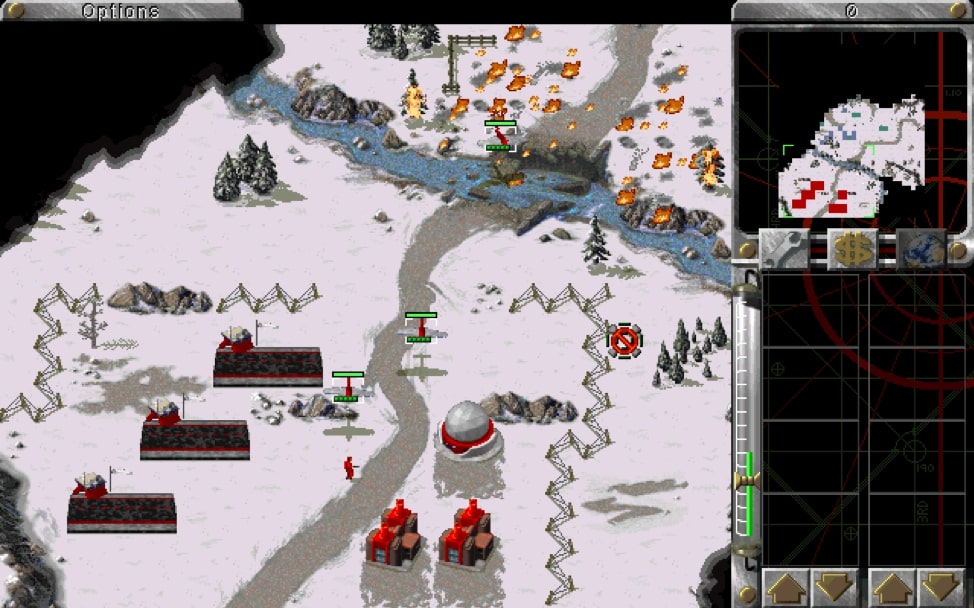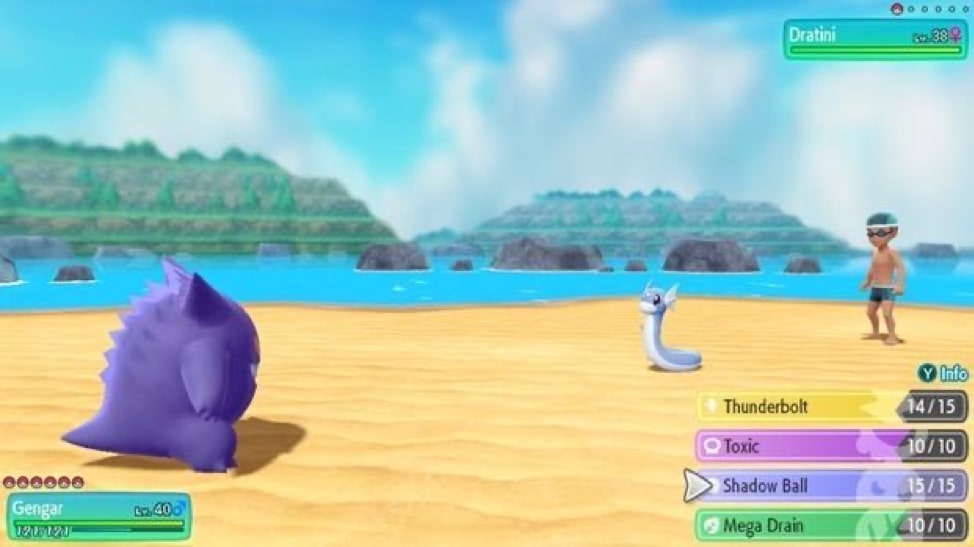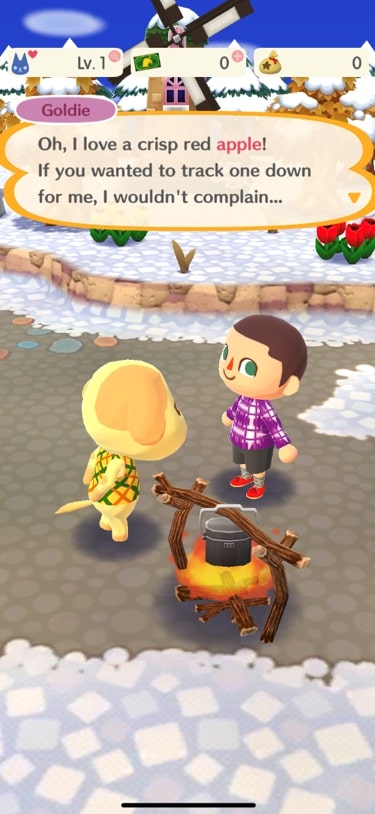We might love video games more than your average tech company. This series features several stories of nostalgia, including how gaming has directly led to careers and influenced our team.
When you work for a tech company, a love for video games is a pre-requisite. Sure, you need “skills” and “experience,” I guess, but that cultural affinity for all things nerdy is just as essential. Now, does that mean you have to be in love with dungeon-storming MMORPGs and first-person shooters, which are the usual archetypes for gaming culture? NAH! In fact, I’m willing to bet that the “average” person is more into gaming than they realize.
I use myself as a prime example. I’ve never considered myself a gamer, at least not in the popularly portrayed sense, but when Andrea Avey prompted InterWorkers to share how video games have influenced their lives, it got me to thinking. After strolling down memory lane and thinking of what games I played growing up and which ones I play now, I realized their impact on my life has been significant. This spurred a new line of thinking: Beyond general influences, what actual lessons have I learned from them? Taking that one step further: How do those lessons apply to my work as the Communications Manager of a punchy, tech marketing team?
There’s only one way to find out. 😊
“Command and Conquer” – Building Your Base
If memory serves, my family got our first home PC in 1995 or 1996. The specifics are hazy since that was 25ish years ago, but I do remember one of the very first games that stuck with me was “Command and Conquer.” I don’t know if my brother or I bought it, but I had a monopoly on that game. Truthfully, it was the sequel, “Command and Conquer: Red Alert,” that was the big hit with me.
In short, “Red Alert” is an alternative history, real-time strategy (RTS) game set just after WWII where the Allies and Soviets are pitted against each other in an epic struggle. The campaign mode of the game follows a series of missions, most of which involve you collecting resources, building up your base, producing various combat units and then crushing the enemy. You literally command and conquer – get it?
There’s obviously a lot of gratification in building up tons of cool-looking tanks, planes and infantry and then hurling them into the fray, but the lesson I learned from hours playing this game wasn’t how to utterly destroy an enemy on the field of battle. The most applicable lesson here that translates well to life is the concept of building your base.

Above: Your base is where everything starts in “Red Alert.” Looks like my base has been cut off!
In the game, if you fail to build a secure base that allows you to collect resources and strengthen your position, you will most likely fail your mission. The same goes for marketing. Before you try conquering the world with that ambitious marketing campaign, you first need to make sure you’re prepared. In that sense, building your base means first asking yourself what skills, resources or conditions you need to complete your task. Once you know what you need, you can then start marshaling those pieces together and mobilize when ready. In the game and in life, there will always be things that harry your defenses (limited resources, setbacks, even self-doubt), but being adaptable and resourceful are two strategies to give you a winning chance.
“Age of Empires” – Resource Management 101
Another historical-themed RTS game, “Age of Empires” may have been my first real PC love. Don’t get me wrong, “Command and Conquer” got me hooked, but “Age of Empires” had me engrossed. The general premise isn’t so different from “Command and Conquer.” You take control of a famous empire out of the history books and follow its story through a campaign consisting of a dozen or so pivotal battles. These battles aren’t exact historical re-creations by any means. Instead, you build up your empire by collecting a variety of resources, advancing through different technological ages and, again, hurling your might against the opposing foe. A key difference from “Command and Conquer” is that there is a little more emphasis on technological advancement, tactics, diplomacy and resources.
That brings me to the prime lesson from “Age of Empires”: resource management. In the game, you have four primary resources: meat, wood, stone and gold. Units, buildings and tech advancements all require some combination of these resources. Units require more food. Advancements require more gold. Walls require stone. You get the idea. Your success in this game is predicated on how well you use these resources, and they are finite. Different battles occur on different maps with different distributions of resources. It’s all about management. If you can acquire resources well and combine them with the right tactics and military strategy, the day is yours.

Above: In “Age of Empires II,” you are surrounded by resources you can render to your advantage.
That brings us to the marketing lesson. Every team or project has a finite number of resources. These resources may include people, budget, time or even more intangible mental resources. So, how do you best use the resources you’ve been given to achieve a goal? An effective strategy is to play to your strengths. For example, if you have one multimedia/graphics team member and three content-oriented people, is it feasible to make a video for every project? Probably not. You’ll likely exhaust one resource while squandering the others. A better strategy in this case might be a more “blog-forward” approach with written content as your workhorse and save the video resource for the special stuff. That’s a simplification, but the logic follows. In the end, it’s about understanding the resources you have and making the best use of them to secure a great outcome.
“Pokémon” – Assembling the Dream Team
Listen, I’m 30 years old, but I STILL want to be a Pokémon Master. I am afraid to count the hours I have put into Pokémon games throughout my life because there is a strong chance it would add up to over a year of my life. The point is that I love these games and for good reason!
The general gist of the games is that you are a precocious youth who has been challenged by your friendly small-town professor (you know, the kind every town has) to travel the world and capture/befriend every variety of creature you can find. As the animated series theme song states, your goal is twofold: “To catch them is my real test. To train them is my cause.” In short, you “gotta catch ‘em all” and then pit your team against other trainers like yourself in order to “be the very best, like no one ever was.”
Boiling down to game mechanics, you can catch as many Pokémon as you wish while traveling the world, but you can only have six on your immediate team at any given time. A big wrinkle is that each Pokémon has a level (which you can increase as you train), its own set of unique statistics and a type. Some types have advantages over others in a sort of Rock-Paper-Scissors way (e.g. water > fire > grass > water). Beating your opponent is a combination of finding the right matchups and implementing superior battle tactics. My all-purpose strategy is almost always assembling a balanced team with diverse types, but if I know I’m about to face a big battle against someone who favors a specific type, I’ll stack my team accordingly to be comprised of team members who excel against that type.

Above: Opening battle with Gengar, one of my all-time favorite Pokémon.
On to the marketing lesson: Much like in Pokémon, tackling projects in real life requires a strong understanding of your team. Who is good at what? What’s their skill level? What challenges are they up against? Who will they pair well with? Much like my balanced, all-purpose strategy, I’m of the opinion that a balanced team in the real world is usually best. If you have a team with a variety of skills (e.g. content, design, video, analytics, etc.), you’ll be able to tackle projects more holistically and can utilize your people to varying degrees depending on the project. There may be times when you feel the need for more of one type or the other, and that’s something you must learn as you go, but I think the best marketing works on multiple fronts while being inextricably integrated. What I mean by that is that most effective campaigns make use of good copy, good visuals, good targeting and good success measurement. The ability to bring those elements together in the right mix is what’s known as good strategy, and that’s the foundation of success.
“Fire Emblem” – Choosing the Right Tactics
The “Fire Emblem” series beautifully combines two of my favorite gaming genres: RTS and RPG (role-playing game). Each game has a different story, but the mechanics of each is that you take control over a group of characters and progress through the storyline by way of various battles. Like an RTS, you must maneuver these characters across different fields of battle, and each field features different terrain types that can work for you or against you. Like an RPG, each character you control has a unique class and associated abilities. You can also equip them with different types of weapons. As you might have guessed, each of these has its own strengths and weaknesses. The key to success then is equipping your team well AND guiding them across the field of battle effectively. It’s not enough to have an all-star team; you must also understand the field of battle and how to navigate your team through that field.

Above: A basic battle in “Fire Emblem: Three Houses.” Terrain is just one variable.
Toggling back to the real world, success in a marketing campaign is similar. Each campaign you work on is going to have a different set of conditions and objectives for success. Achieving your goal requires the right team, the right abilities, the right strategy and the right tactics to execute that strategy. Get one of those things wrong, and you can find that success becomes harder to achieve.
But how do you even know what the right moves are in the first place? It all starts with research. If you can analyze and anticipate your potential obstacles and advantages, you can hone better tactics that lead to more success. An important thing to note here is that there is rarely one strategy or set of tactics that leads to success. Each has its risks and benefits, and you must find the right fit for you. Don’t forget that in both pixelated battle and in life, there are always unforeseen events that confound even the most well-laid plans. Come prepared, but prepare to adapt.
“Roller Coaster Tycoon” – It’s All About the Experience
Wow. We’ve really run down the “battle” rabbit hole up until this point, so I think it’s time for a shift. “Roller Coaster Tycoon” is one of those game series that just has universal appeal. I think just about everyone my age knows exactly what these games are about, and they’re a ton of fun. The general concept is that you are an aspiring theme-park builder whose goal is to build the biggest and baddest theme park you can. You can do this however you want, so long as you fulfill two primary objectives: keep your park profitable and your customers happy.
If you’re like me, your first inclination in a game like this is to build the biggest, most absurd roller coaster you can imagine. The only problem there is that one giant roller coaster a theme park does not make. To truly be successful, you need different rides, solid infrastructure, dining and beverage options, restrooms (lots) and great ambiance. The ambiance part is really what hooked me after the “build big” desire wore off. That’s exactly where the game shines if you ask me. There are near-limitless customizations in the game. Want to make a spooky-themed park with nothing but Halloween scenery? You can do that. Feeling a winter wonderland instead? Also doable. Want to feed your visitors a steady diet comprised only of hot dogs? That is your prerogative.

Above: A theme park in an active volcano? Yes, you can in “Roller Coaster Tycoon 2.”
So, with so many options at your disposal, what makes a great park experience for your visitors? Well, there are the basic needs to meet like overall fun, wait times, revenue, restrooms, hunger and so on, but meeting basic needs does not guarantee a great experience. It’s not enough to just keep things operational. The great parks are those that also provide a beautiful, thoughtful and cohesive experience on top of taking care of those basic needs. Great parks are those that inspire. Maybe this is achieved through a unified look or maybe by having a restroom cleverly placed near every hot dog stand. The point is that building a great experience is all about anticipating your participants’ needs, wants and perceptions then delivering on them.
Bringing that concept back to marketing, it’s not enough to write clear copy, design pretty images or be a master of analytics. You can create some sublime work and still fall flat if you fail to consider how your audience will experience your work. This requires deep knowledge of who your audience is and how they behave. By understanding those elements and curating an experience around it, you can ensure that your great work will deliver even greater results.
“Animal Crossing” – Relationships Matter
I think I was in fifth or sixth grade when “Animal Crossing” came to GameCube, and it was unlike any game I had played before. The point of the game? Well, that’s hard to say because there isn’t a definite objective. The general idea is that you are a human who has just moved to a town full of adorable animals. You start with a humble abode, sparse furniture and a handful of bells (the currency of this world). What you do next is up to you.
You can focus on expanding your home, buying new things and completing collections of those things, which requires more bells … lots of bells. These bells can be earned through several activities like fishing, catching bugs, harvesting fruit trees or running errands for your animal neighbors. That’s where the point of the game comes in: building relationships. I have built many an empire by catching rare beetles and the fabled Coelacanth fish, but the real key to getting ahead is forging strong relationships with your neighbors. In doing so, you receive rare gifts, get invited to unique events and are opened up to a much more vibrant experience than you would going it alone.

Above: Fielding a neighbor’s request in “Animal Crossing: Pocket Camp.”
Marketing (and life) are much the same. Success is difficult, if not impossible, without developing quality relationships. In a professional sense, developing good relationships is smart for many reasons. It can open new doors. It can lead to brilliant collaborations. It can also build mutual success that’s far greater than any individual success. That’s because your work then becomes bigger than just you. But let’s put professional considerations aside for one second. The biggest reason to develop good relationships isn’t so you can get ahead professionally (that’s very much the wrong reason). Rather, I’d argue the biggest reason to develop good relationships rests in something more fundamental to the common human experience: that life is simply done better together.
Back to Reality
Wait, did we just get deeply philosophical talking about adorable, pixelated creatures? I think we did. So, let me bring this all back to reality. When I set out to write this piece, I wasn’t exactly sure what the lessons would be for each game. Safe to say, I’ve never before considered what lessons my favorite video games could teach me; I only considered whether they were fun to play. But therein exists the beauty of all this. I think the best lessons are those that are taught without you even realizing it. That’s what each of these examples has in common. Even if you’ve never heard of these games before, I hope that—if you’ve made it this far—the lessons I’ve shared resonate with you in some way. At the very least, I hope it causes you to pause and consider what lessons your favorite games have taught you. I’d love to hear them in the comments section! Until then, may you win every battle, catch every critter, and, please, try not to eat too many hot dogs before hopping on the Doom-Coaster 3000.

